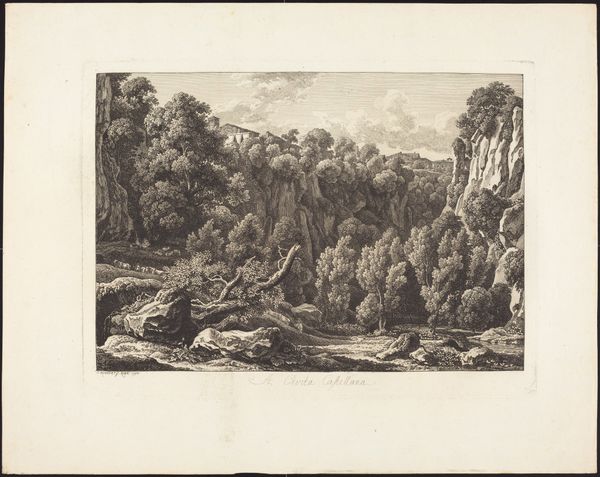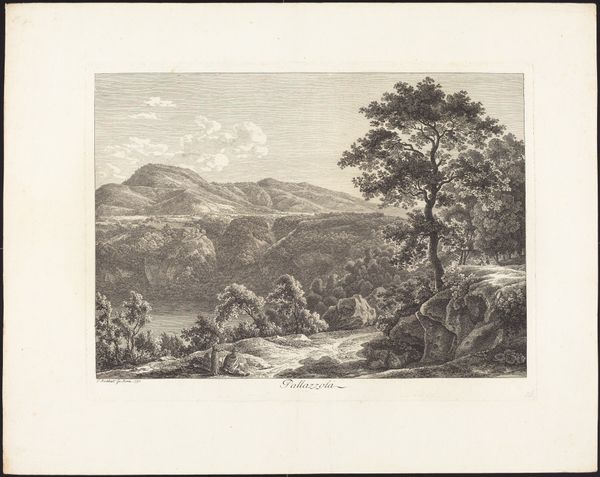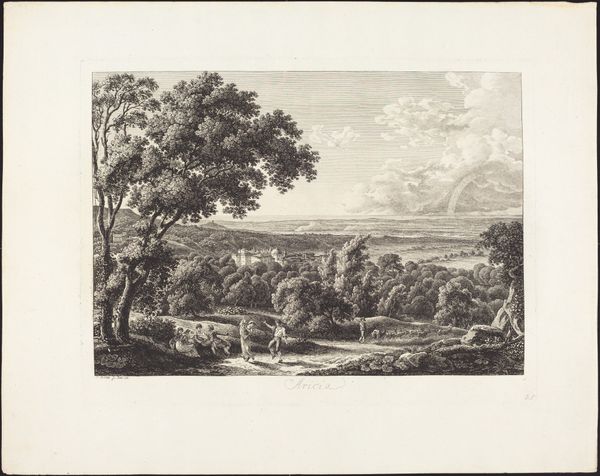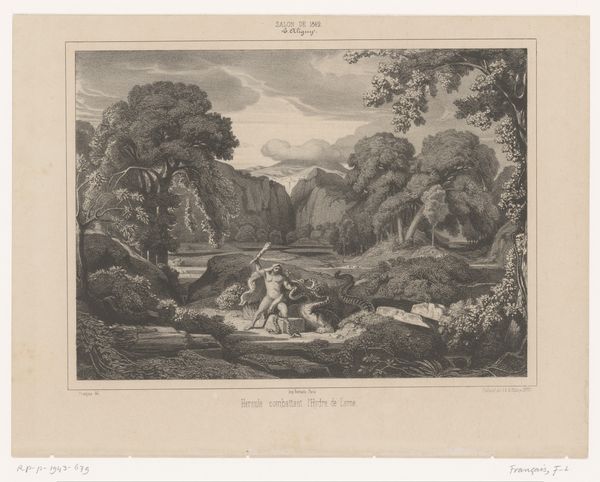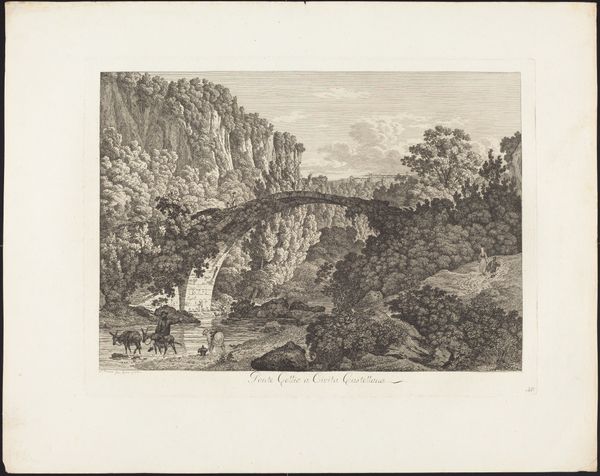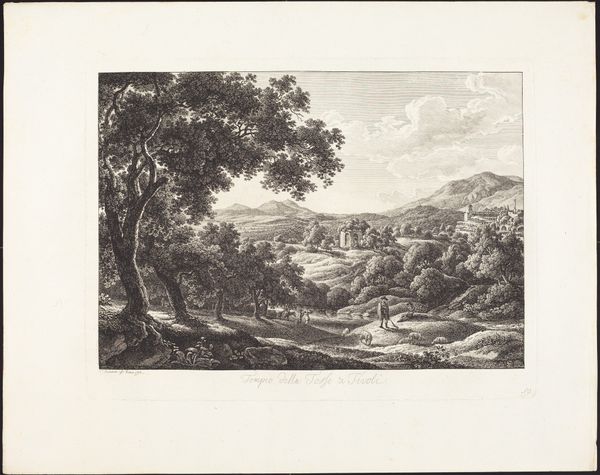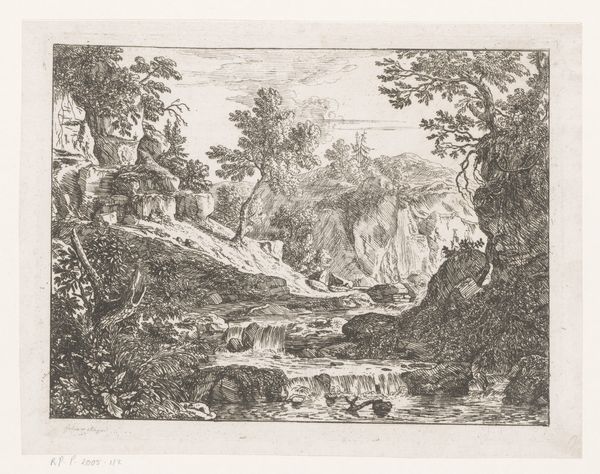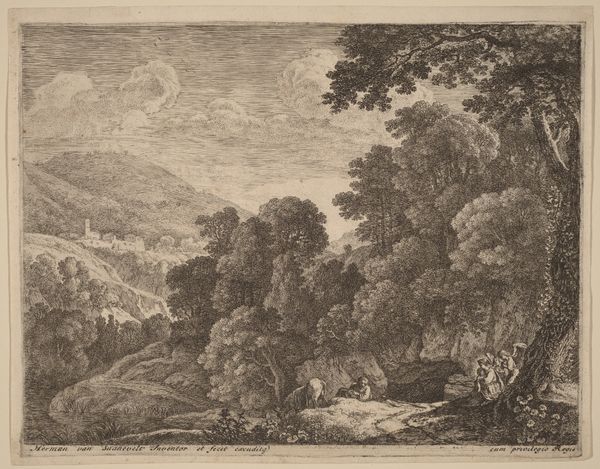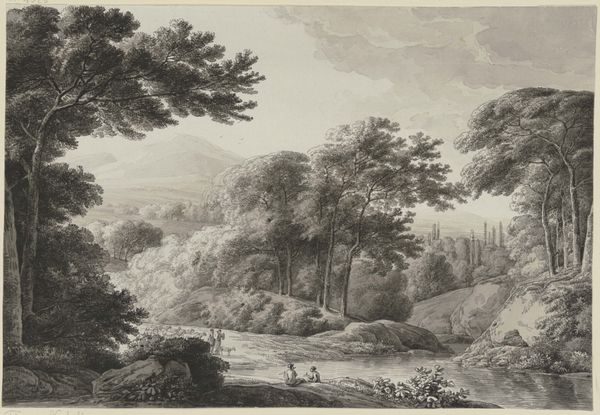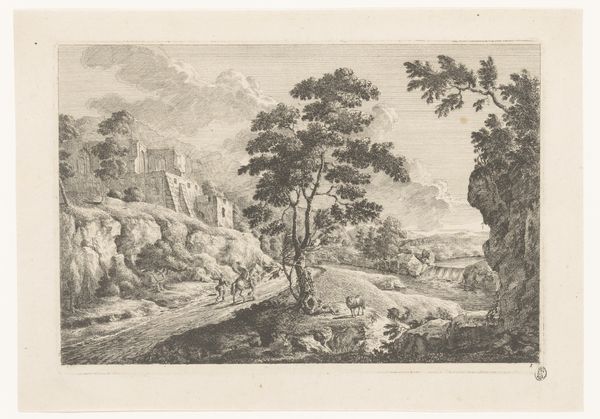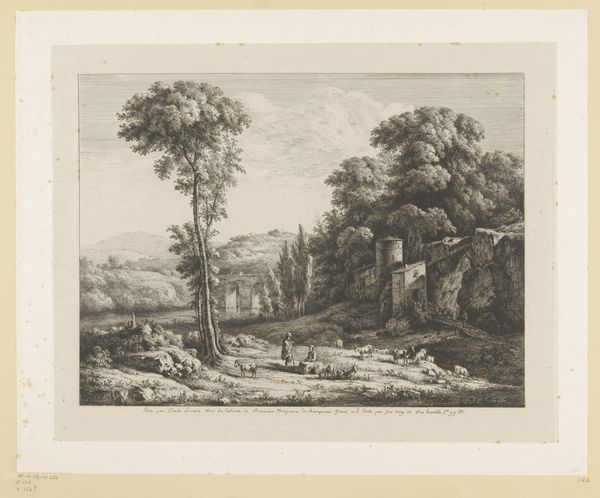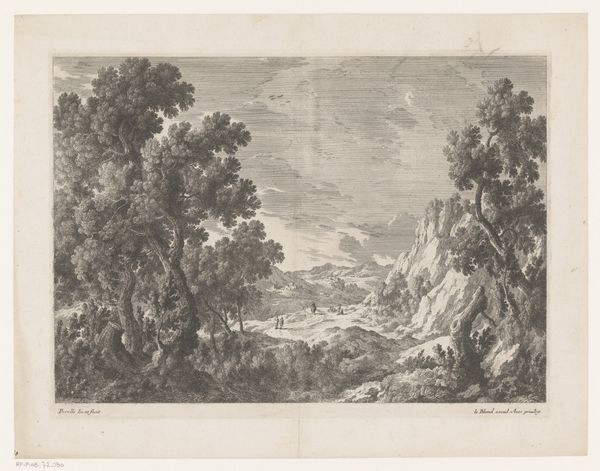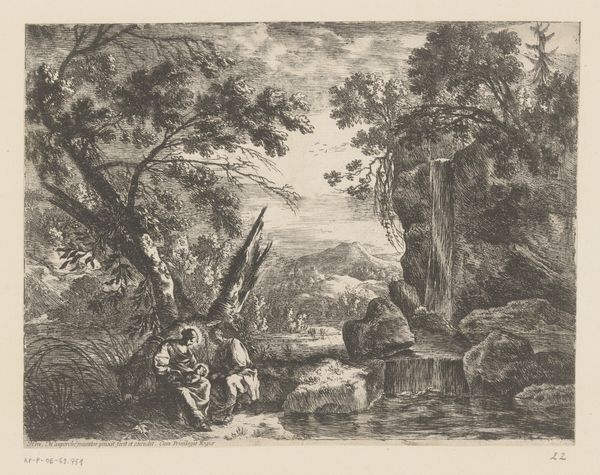
#
neoclacissism
# print
#
landscape
Dimensions: plate: 28.1 x 37.7 cm (11 1/16 x 14 13/16 in.) sheet: 39 x 49.4 cm (15 3/8 x 19 7/16 in.)
Copyright: National Gallery of Art: CC0 1.0
Curator: Here we have Johann Christian Reinhart’s "Vicino a Subiaco," a print dating back to 1794. Immediately striking, isn’t it? Editor: Absolutely. It evokes a somber tranquility; the density of the etching, that nearly monochromatic palette, creates a space seemingly untouched by modernity, but ready to yield materials. Curator: Indeed, and its existence as a print complicates that impression. Consider the tradition of the Grand Tour at this time; this image, reproduced, becomes a token, a mass-produced souvenir of the picturesque ideal embraced by European elites. The making of the print becomes almost an assembly line of image production. Editor: It's about transforming a physical place, a landscape and natural resources into something easily consumed and carried across borders. What sort of metal plate did Reinhart likely use and how long did the print process take, I wonder? It certainly suggests a relationship of control over the land, where it could be efficiently extracted and re-presented. Curator: That echoes Neoclassicism's project too. Reinhart here doesn't just depict nature but seeks to ennoble it, conforming to this era's emphasis on order and structure even within these wild settings. He uses this artistic movement to enhance the landscape. Editor: It's interesting to see it interpreted that way because from a practical standpoint, creating those even tones and minute details using metal plate etching is labor-intensive, involving very physical skill and an intimate relationship with the materials themselves. You are very involved with material resistance to make art like this, a far cry from leisurely observation. Curator: I hadn’t thought of it that way, but I do like how your perspective encourages us to not only look at the art, but consider its history and significance, taking into account the larger socio-cultural movements. Editor: Exactly, and hopefully inviting everyone to think about the materials that have gone into everything they observe in the everyday.
Comments
No comments
Be the first to comment and join the conversation on the ultimate creative platform.
